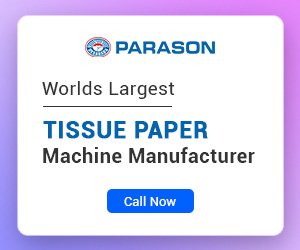Well, we all know we get our daily dose of Sugar from Sugarcanes. The rise in demand for Sugar has exponentially grown in the last few years. The unprecedented growth of the FMCG industry has caused a significant surge in Sugar consumption.
Increasing Sugar consumption has definitely benefitted farmers producing sugarcane at their farms.
What is Sugarcane Bagasse Plant?
For Sugar production, sugar mills extract juice from sugarcane. After the extraction, the leftover remainings of fibrous materials are called Bagasse.
This Bagasse has a very high demand in various industries across the globe. Out of all the industries, it is the paper industry that requires this Bagasse in a substantial quantity.
What can you do with Sugarcane Bagasse?
All products made from sugarcane bagasse are recyclable, including the Bagasse itself. Because of its ability to be recycled, it is both very useful and environmentally beneficial.
The Bagasse can be mostly used for the following use cases,
- Fuel
- Paper and related products
- Sustainable Tableware products
1. Fuel:
Bagasse is a great source of fuel. It is recommended to remove moisture content to use it as fuel for various industry applications.
Usually, the extracted Bagasse has 40-50% moisture in it. This moisture content has to be removed from the Bagasse.
Sugarcane mills generate electricity from Bagasse for plant operation. Mills can also transfer excess electricity back to the electricity stations to minimize the running cost of the plant.
2. Paper & Related Products:
The Paper industry is the largest bagasse-consuming industry. Papers made with Bagasse have huge demand due to their recycling properties.
Paper, Pulp, and Board products require a very high amount of fiber structure formation, and this formation can easily be achieved with Bagasse. Bagasse minimizes the paper manufacturer’s dependency on the wood.
Newsprint, Tissue, Cardboard, and Notebook paper can be easily produced with Bagasse. It provides better results than the conventional raw material, i.e., wood.

3. Tableware products and Packaging:
Due to the environmental changes and its growing awareness end users are now preferring sustainable products over regular non-degradable plastic products.
This change in user behavior has directly benefitted the tableware products businesses. Sustainable Tableware products are made with sugarcane bagasse, due to which they are degradable.
Many global brands are also using bagasse products for Packaging. These big brands are now accepting and promoting sustainable packaging solutions.
Land Arrangement for Tableware Plant?
Acquiring or renting suitable land for your plant should be your main priority. If you are a farmer and have good land, then you can start the plant on your land as having both plant and raw material at the exact location is very cost-efficient.
In case if you are not a farmer, then you can rent or buy land at any nearby sugarcane land. You can then do agreements with nearby farmers for raw materials. You can also directly contact bagasse suppliers.
Also, Make sure the chosen land has proper transportation arrangements.
Required Machines For Tableware Products?

Tableware plant consists of four main stages,
- Pulping
- Forming
- Shaping & Drying
- Edge Cutting and Sterilization
- Packaging
Out of all the above-mentioned stages, Forming is considered as the primary stage in the tableware plant. Best quality forming machine is needed to obtain fine quality products.
After the forming process, Edge Cutting Machine is used in the next stage, where we shape our products as per the required standards.
Also, read 10 Tips to Set Up Molded Fiber Production Plant
Also, read How to Start a Sugarcane Bagasse Product Manufacturing Plant: A comprehensive guide
Setup Cost of Tableware Products Plant?
With Bagasse, one can quickly produce tableware products with meager starting capital costs. Setting up a tableware plant does not require a considerable sum of money.
A well-planned tableware plant will cost you somewhere around Rs.9.5 cr. to Rs.10cr (approx. USD 1.1 million to USD 1.2 million). This cost may vary depending on your location.


